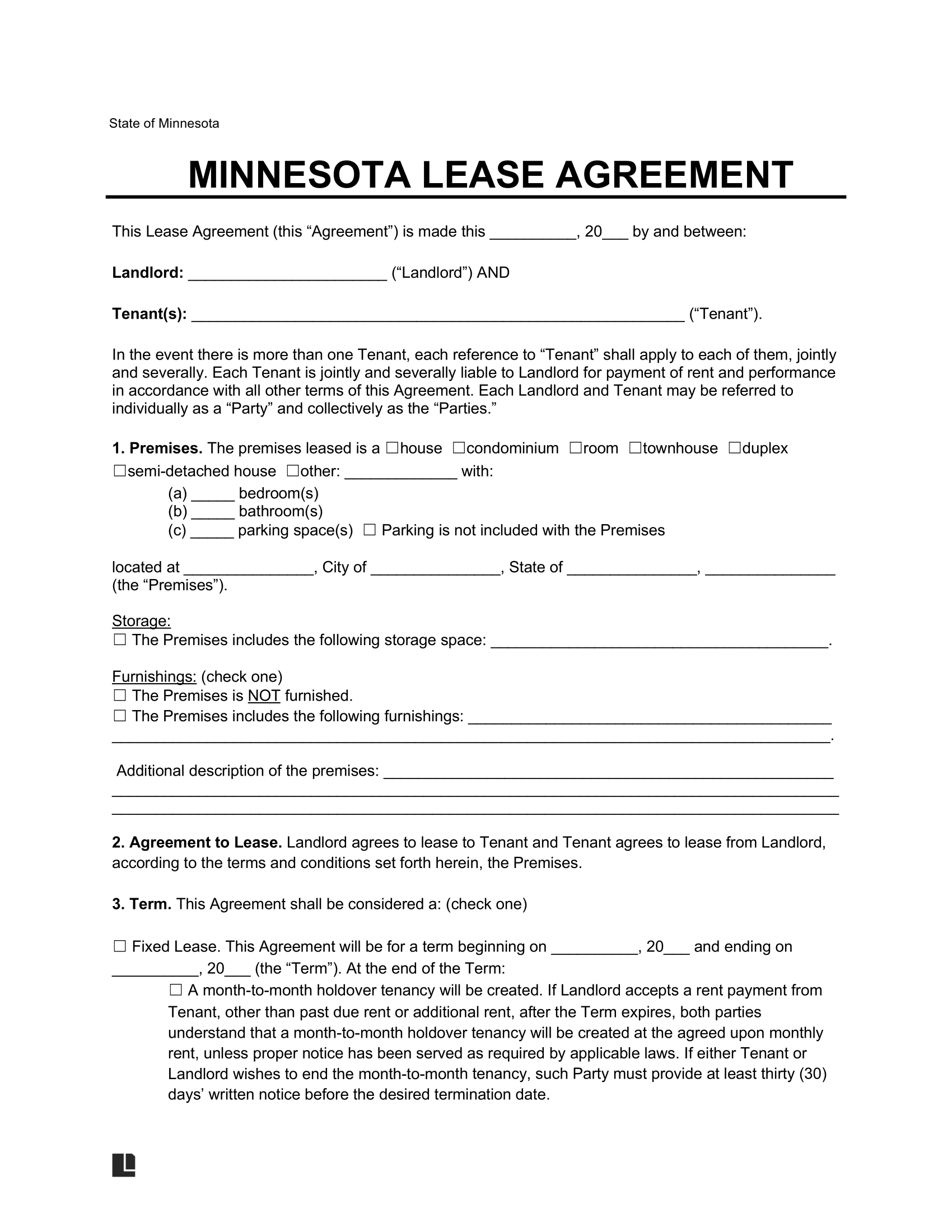A Minnesota standard residential lease agreement is a written rental document between a landlord and tenant for renting residential property.
The tenant must complete a rental application and be approved by the landlord to sign the lease with negotiated terms, including monthly rent, security deposit, utilities, and appliances. The lease outlines the rights, obligations, and responsibilities of both parties.
Lease Length Considerations
- The lease agreement implies the shortest interval between rent payments after its expiration [1] .
- Residential lease agreements typically last 6 months to one year.
- It is a legal requirement that leases lasting one year or more be documented in writing.
- Verbal leases are valid for terms of less than one year or if the landlord owns fewer than 12 rental units.
- If a lease term for a residential unit ends before the last day of the final month, the final month’s rent must be prorated so that the tenant only pays for the actual number of days of occupancy [2] .
Required Lease Disclosures
- Identification of Management
- Notice of Foreclosure
- Covenant Against Unlawful Activities
- Outstanding Inspection Orders
- Lead-Paint Disclosure
For further details on mandatory disclosures and related regulations, see our Minnesota lease agreement page.
Security Deposit
- Maximum Amount ($): No state-imposed limit
- Returning to Tenant: Within three weeks [3] .
Rent Payment
- Grace Period: None.
- Maximum Late Fee: The late fee cannot exceed eight percent of the overdue rent payment [4] .
- NSF Fee: A service charge, not to exceed $30, may be imposed immediately on any dishonored check [5] .
Landlord Resources
- Landlord-Tenant Laws – § 504B (Landlord and Tenant)
- Handbook – Landlords and Tenants: Rights and Responsibilities (PDF)

